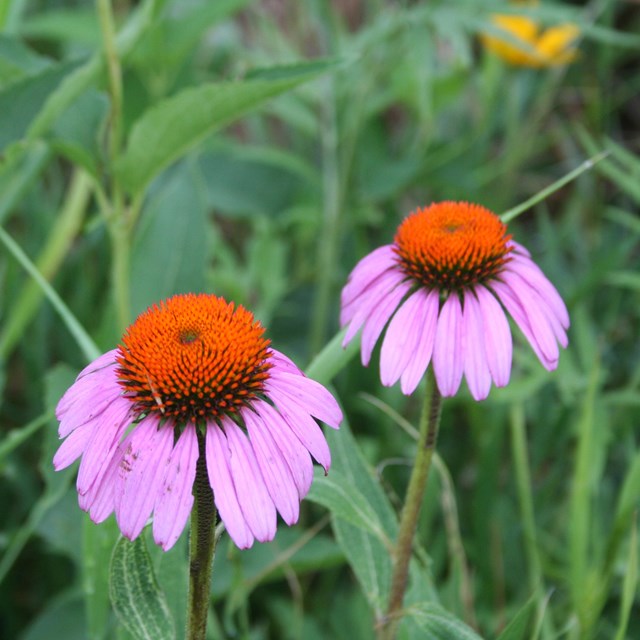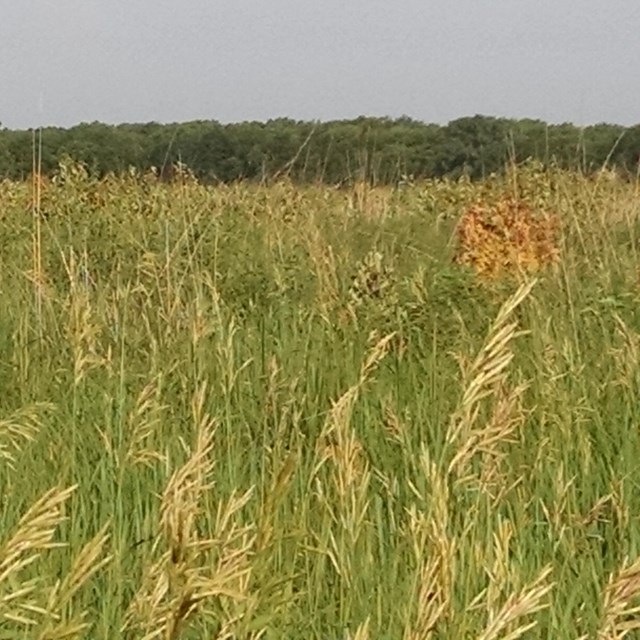|
Gage County, located near the southeastern corner of Nebraska, sits in the center of the temperate grassland region of North America, at the western edge of the tallgrass prairie region. This area, characterized by rolling hills, thick soil, and periods of abundant rainfall, was once covered by a sea of grass up to ten feet high. Remnants of eastern deciduous forest are found along the valleys of the Missouri River and its tributaries, while farther west, shorter grasses dominate the more arid landscape. The 100 acres of tallgrass prairie and 60 acres of riparian woodland at Homestead National Historical Park are similar to the environment that Daniel Freeman encountered when he first staked his claim. The park’s prairie, restored in 1939, is the second oldest restoration effort in the United States. This restoration has brought back much of the prairie’s original diversity, with 300+ species of plants present on the Park. Also notable is the rare, mesic bur oak forest.
Plants at Homestead |
Last updated: September 12, 2024



